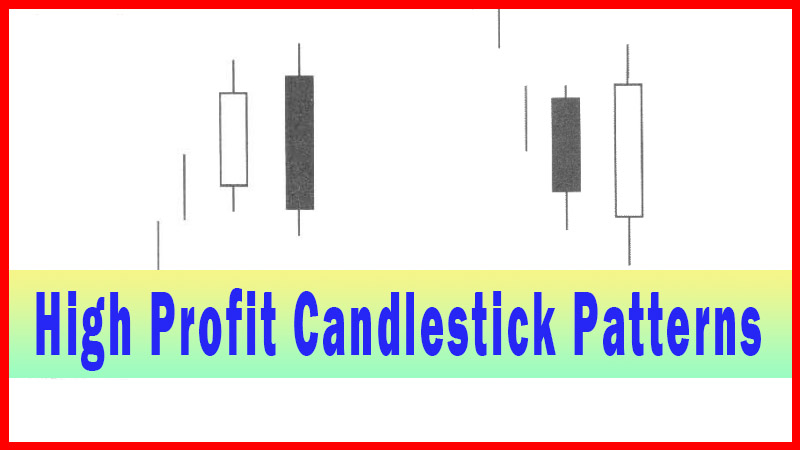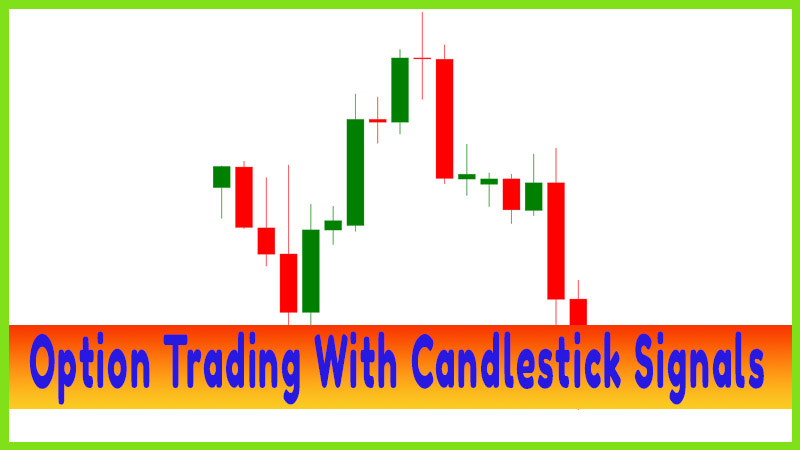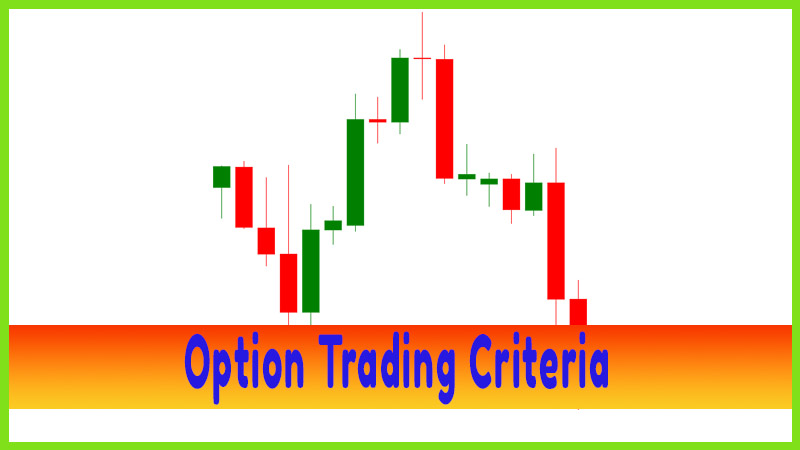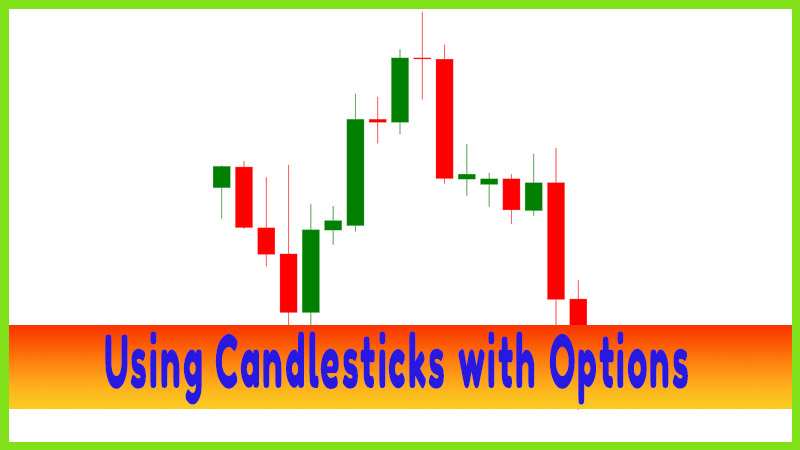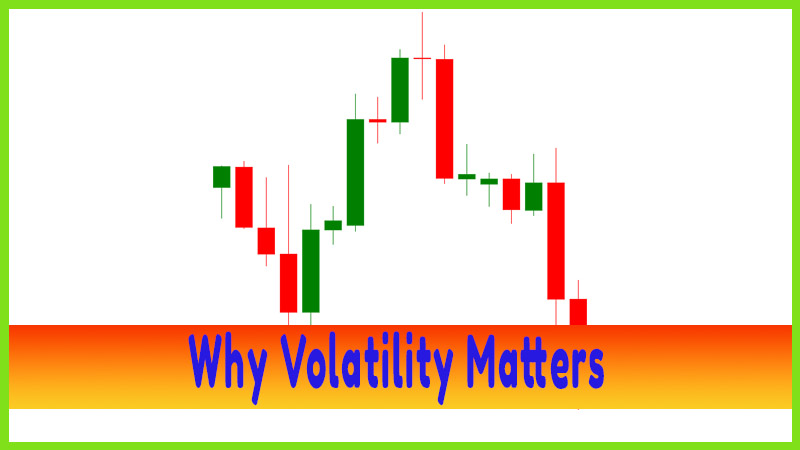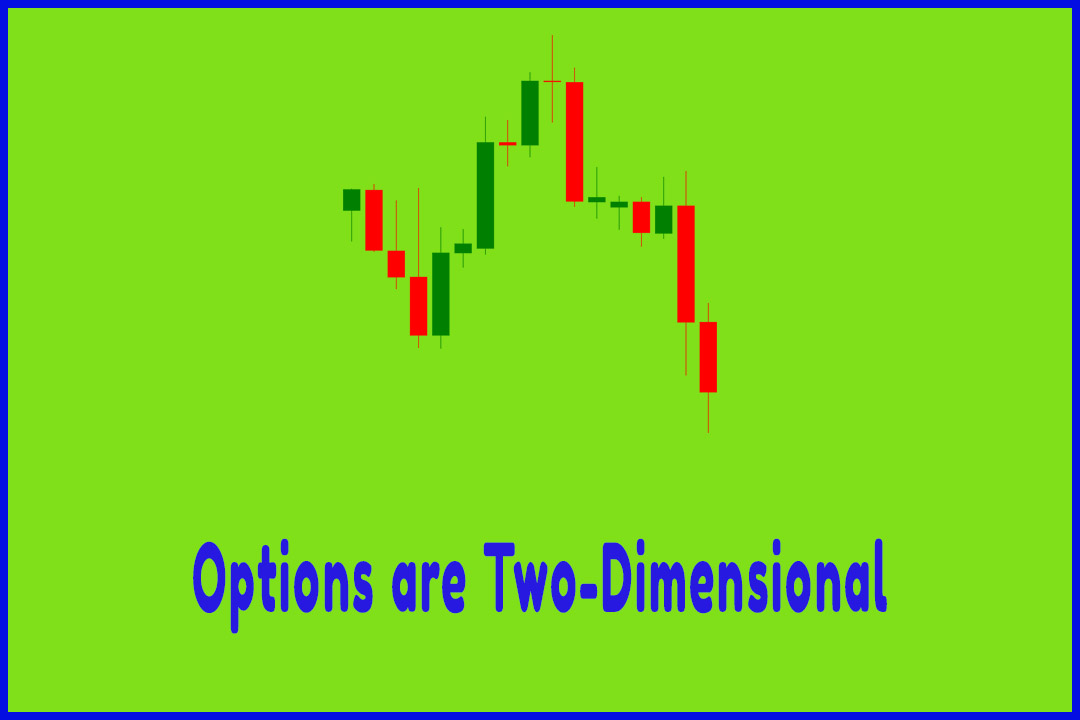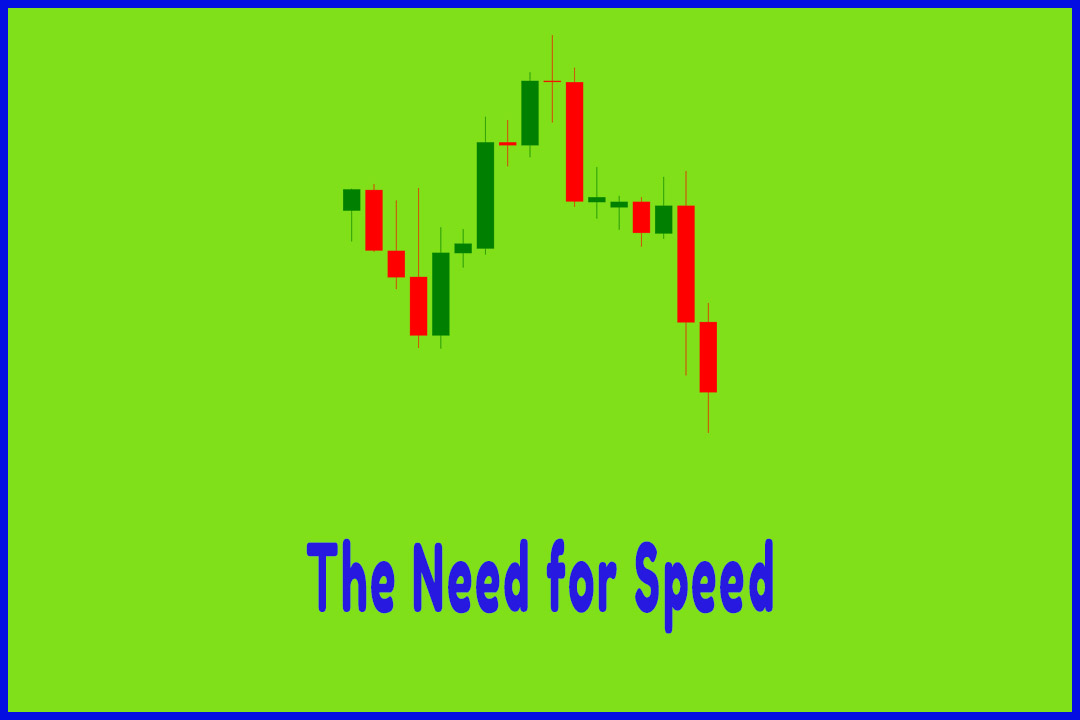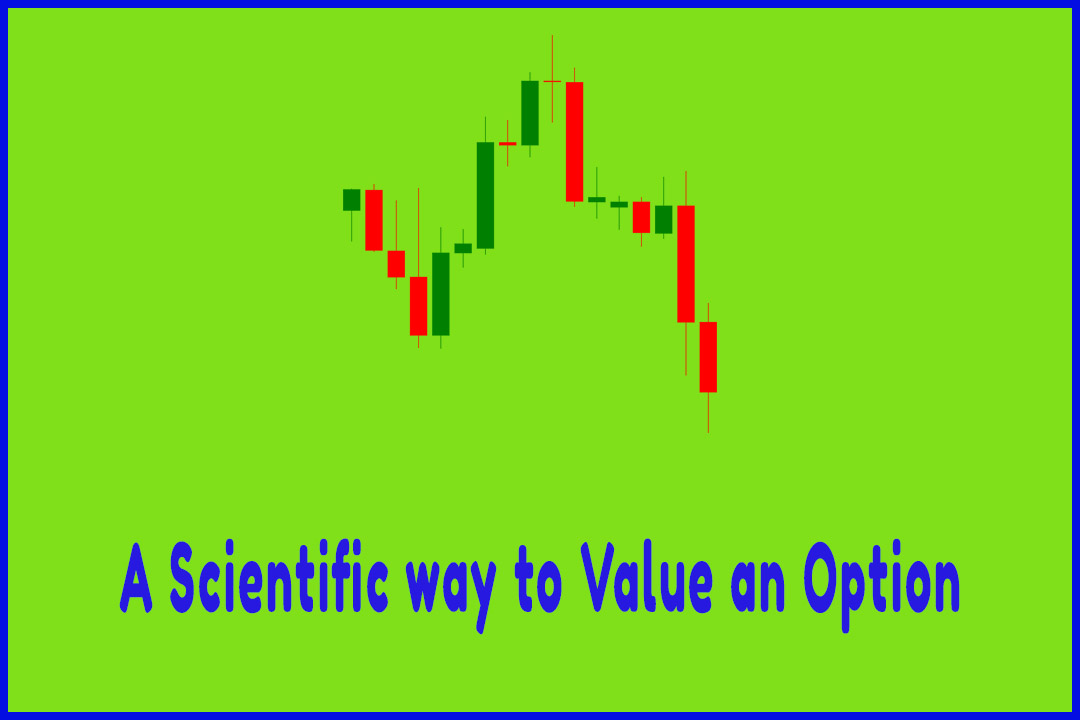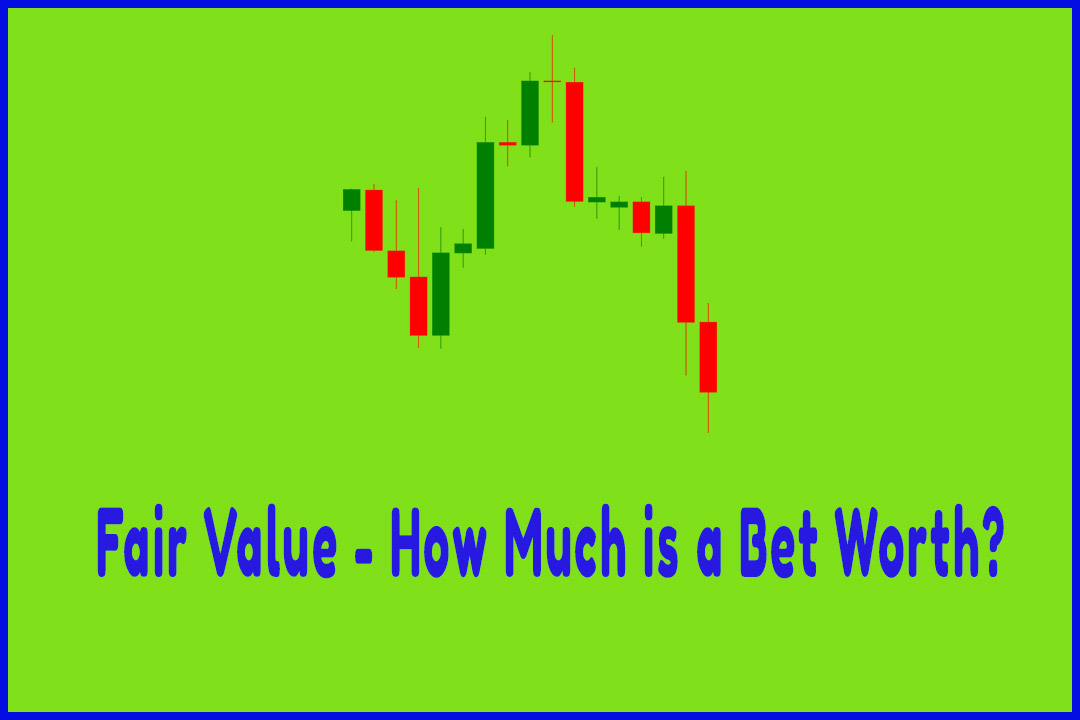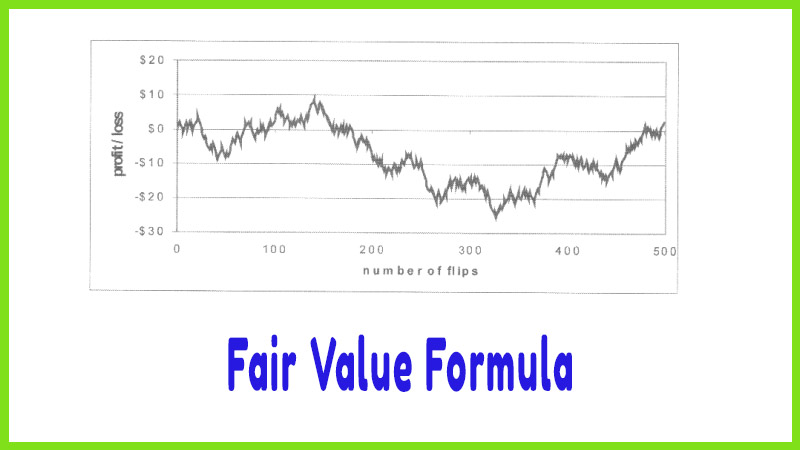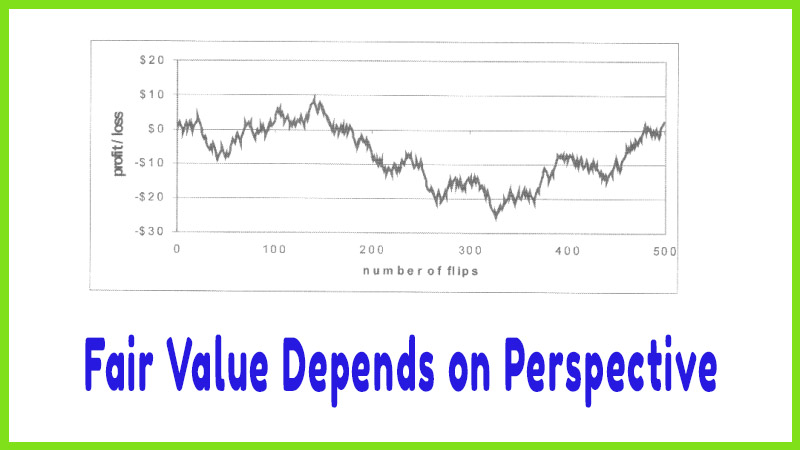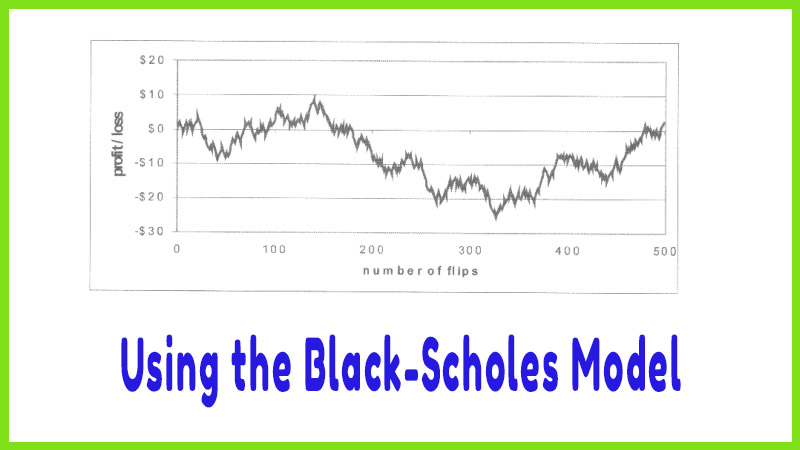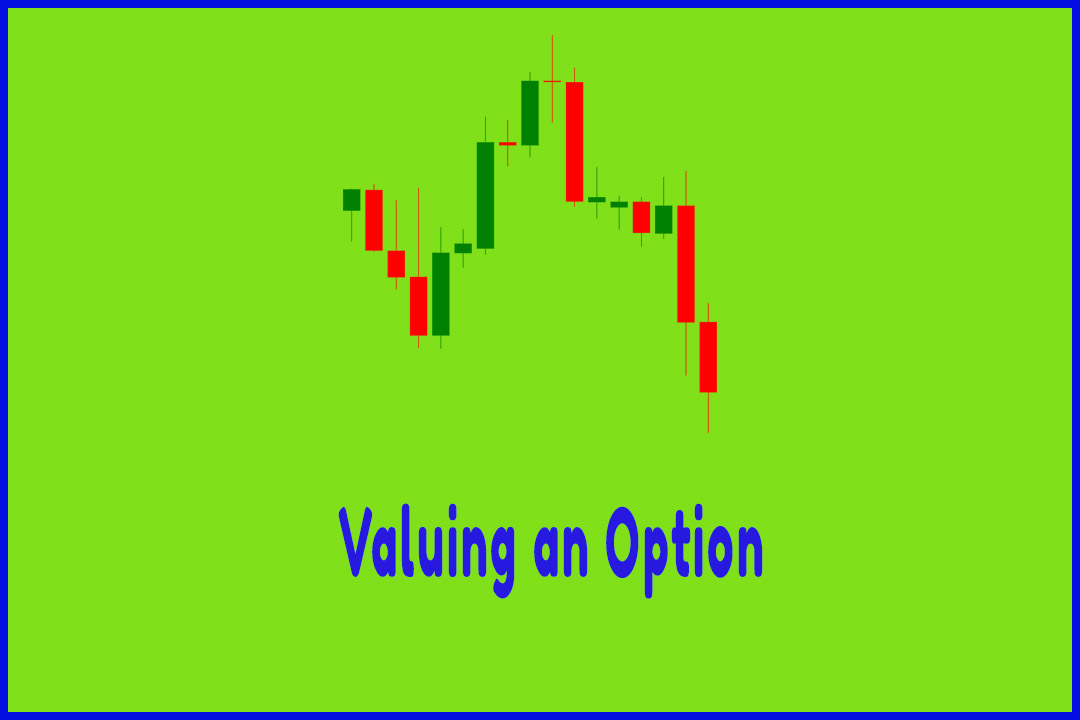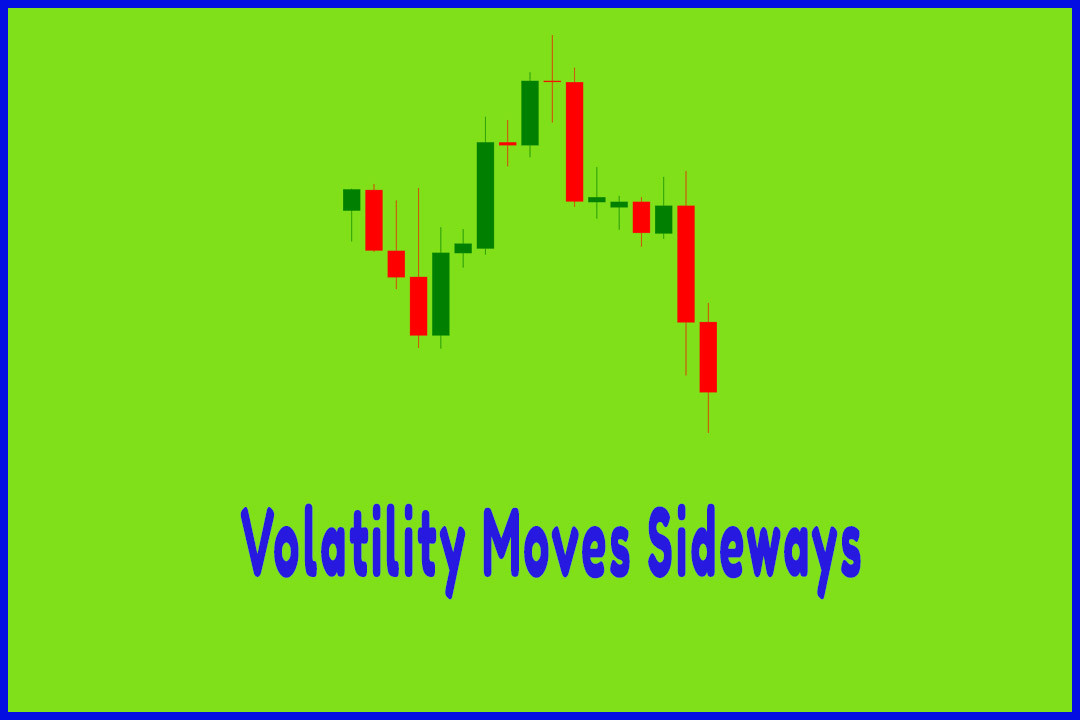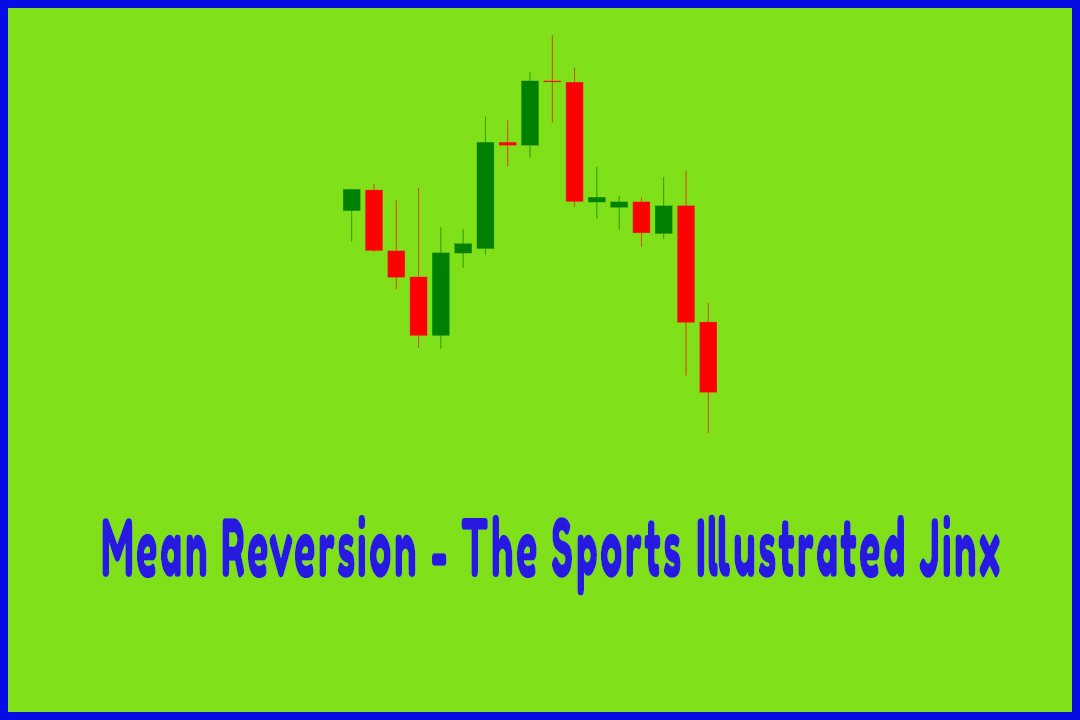Putting it all Together - Option Trading
option trading guidelines, option trading requirements, option trading good for beginners, best option stocks for beginners
Course: [ How To make High Profit In Candlestick Patterns : Chapter 6. Option Trading with Candlestick Signals ]
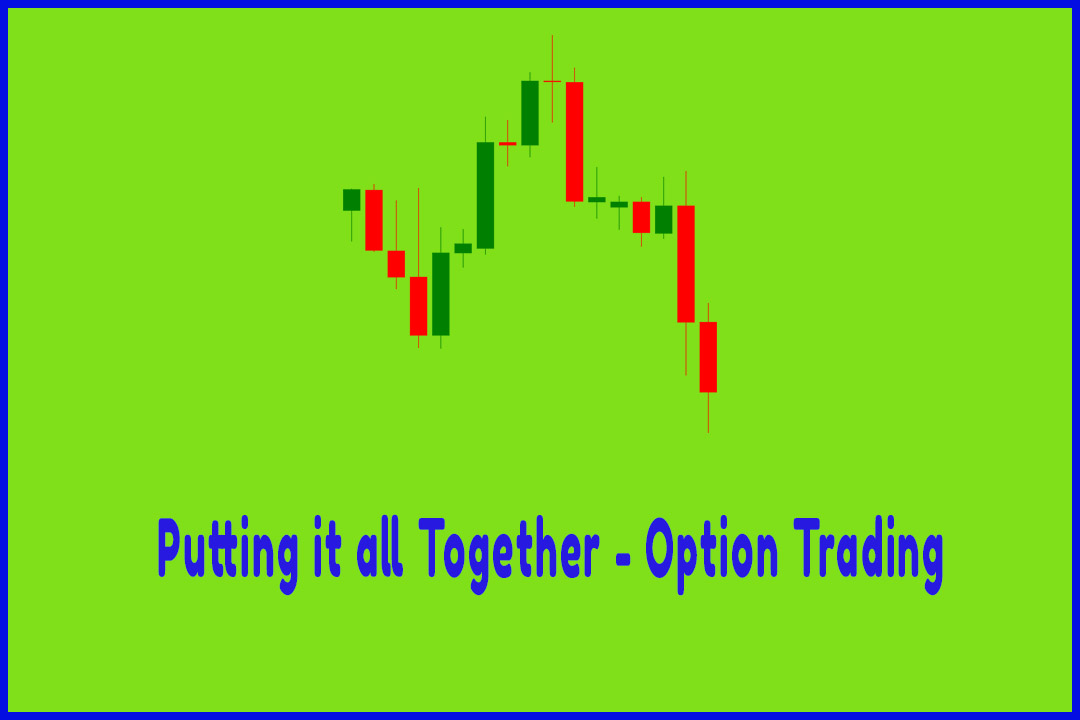
Now that you understand about fair value along with the fact that volatility tends to move sideways, let’s see if we can use this new knowledge to help us check the value of an option.
Putting it all Together
Now that
you understand about fair value along with the fact that volatility tends to
move sideways, let’s see if we can use this new knowledge to help us check the
value of an option.
Let’s go
back to the VIP trade we discussed at the beginning of the chapter. To make the
example easier to follow, let’s just pick one of the call options.
Since
most option traders are tempted to buy the out-of-the-money strike, we will
assume that we are interested in buying the $33,375 call.
Figure 1
shows that the $33,375 call was priced at $2.50 on December 16. But we also
said that there can be significant differences between an option’s price and
its value. Before we buy this (or any) option, we need to check the value by
checking the past volatility of the underlying stock. Once we get a feel
for how the past volatilities have behaved then we can gauge how much we should
be willing to pay for the option.
By
checking the historical volatility, we are gaining an idea of the possible
payouts from the option. In other words, if VIP closes at $34,375 at
expiration, that call is worth $1. If the stock closes at $35,375 it is worth
$2 and so on. How likely is it that the call is worth either of these values?
How likely is it that it’s worth more? To answer that, we need to know the
standard deviation of the bell curve representing the stock price changes and
that’s exactly what the past volatilities show us.
One of
the simplest ways to check the past volatility is to view a long-term chart,
perhaps one year or more, of the volatility on the underlying stock. Because
we are trying to determine the value of the $33,375 call, it is usually best to
match the expiration with the moving average. For example, the $33,375 call
expires in about 30 days so we should use a 30-day moving average for the
historic volatility. Figure 8 shows a one-year chart of the 30-day moving averages
for the volatility of VIP stock:
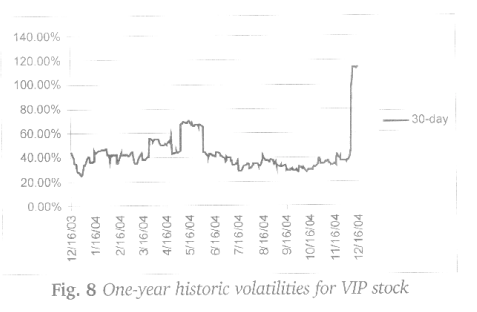
If you
look at Figure 8, you will see that the average has just moved between a low of
30% and high of about 70% with the exception of the spike at the end of the
chart approaching the 120% level.
Now we
have a decision to make. Which volatility level will be correct for the next
thirty days until expiration of the calls? While we will never know the correct
answer until after the fact, we do know the long run history has been between
low of 30% and a high of 70% so our estimate should probably lie in this
region. Figure 8, however, shows that the current level of volatility is near
120%. If we use this volatility to price the option, we will probably be
fighting a downward pull on the option’s price, as the volatility will most
likely fall back to the average. Remember, the price of an option is directly
tied to the volatility. If the volatility is high then so is the price. But if
we are expecting volatility to fall, then the price of the option will fall as
well if our expectations are correct.
Prior to
the large spike in Figure 8, the 30-day volatility had just crossed the 40% so
that might be an estimate for future volatility over the next 30 days. Although
40% is one estimate, it is not the only one we could use. Remember that
volatility is the only true unknown in the Black-Scholes Model and now you see
why - volatility does not stay constant. However, most option traders would
agree that the future volatility estimate should be fairly representative of the
moves we observe in the chart. If we were to ask many option traders for their
opinion on future volatility, we might obtain estimates in the shaded area of
Figure 9:
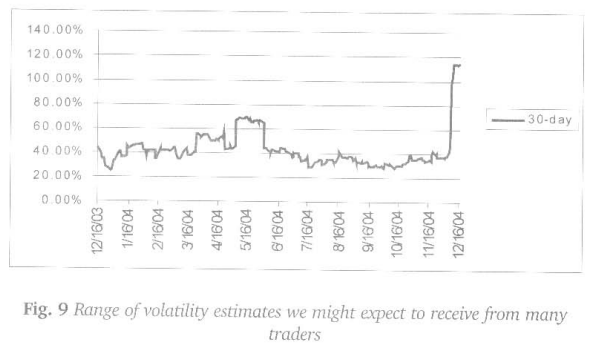
Traders
with a strong bullish conviction may be willing to buy the option with a
volatility level at the high end of the shaded area, say 60%. Traders less
convinced of a large price move in the stock may only be willing to buy the
option at the lower end of around 40%. But very few traders should be willing
to pay the current level of 120% since that is a very rare volatility level.
This shows why it is not a good idea to rely on software that compares a single
point (such as the 30-day average) to the current price. Under this system, the
software would tell you that an option priced at 120% volatility’ is fairly
priced even though that’s far from true based on historical standards.
Let’s
assume we split the difference between the 40% and 60% levels and use 50% for
our future volatility estimate. What does the Black-Scholes Model say about the
value of this option?
We know
the current stock price is $31.41, we’re interested in buying the $33,375
strike, there are 39 days until expiration, no dividends are paid on the stock
over the life of the option, and we just decided to use 50% as a future
estimate of volatility. (Remember, this calculator automatically finds the
risk- free interest rate for you.) Figure 10 shows that the fair value of a
call option with these inputs is only about $1.30:
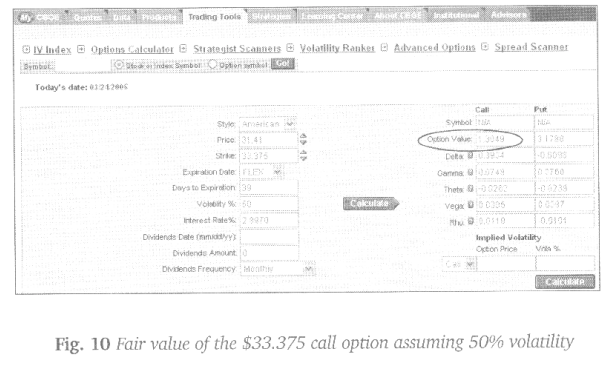
There is
clearly a discrepancy between what we think the call is worth when compared to
the $2.50 market price. In other words, the $2.50 market price of the option is
far greater than the $1.30 value to us.
We said
earlier that there are two ways we can view a bet and now it’s time to take a
look at the second way. Let’s assume that the market is correct and that the
$2.50 asking price is a fair value for this bet. Which volatility must the
market use to come up with a price of $2.50? We can find out by simply entering
the $2.50 asking price into the “implied volatility” section in the
lower right hand corner of the calculator, which is circled in Figure 11. (Make
sure you also select “call” from the drop down menu.) After we lilt the
“calculate” bar in the same circle, the calculator shows that the market is
using a volatility estimate of nearly 80% (79.64%).
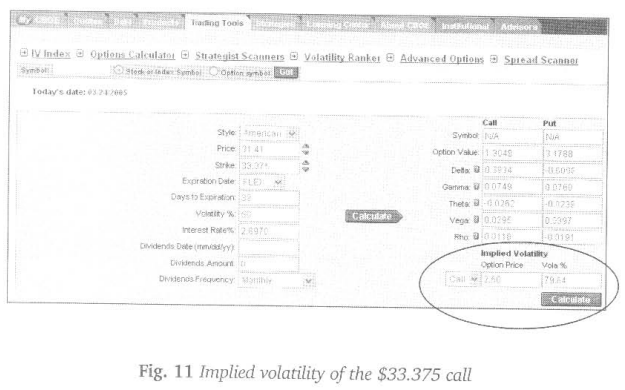
The
implied volatility shows us the volatility level that must be used in order to
make the current market price true. The market does not agree with our 50%
estimate and is, instead, using a volatility of nearly 80%. If you type 79.64
into the “volatility %” box on the left hand side of the calculator, the
price of the call would show $2.50. Just as with our coin toss example, the
market does not need to specifically think that the future volatility is 80%.
The mere fact that traders are willing to pay $2.50 for the call implies that
they are using 80% as an estimate of future volatility. It is for this reason
that the 80% figure is called the implied volatility. What likely caused this
high level of volatility is the fact that traders continued to buy up these
call options without consulting a pricing model.
Now, as
option traders, we have a decision to make: Does 80% seem like a reasonable
estimate of future volatility? After checking the volatility over the past year,
we find that it does not seem to be in line with any of the volatilities we’ve
seen in the past with the exception of the recent spike. This does not mean
that it’s impossible to make money with this option if we were to pay $2.50.
Instead, it shows that the odds appear to be stacked very much against us. It
is a trade we’re better off avoiding. In our opinion, this appears to be a
losing proposition if we were to make this exact trade hundreds of times.
Why does
$2.50 appear to be an unfair price? If you pay $2.50 for this option, there is
a very good chance that volatility will revert to the average - dragging down
the option’s price with it. And that is exacdy what happened with the VIP calls
in Figure 1.
Figure 12
shows an overlay of the stock’s price (shaded line) and the 10- day historical
volatility (bold line). You can see that the stock’s price did rise after
December 16 but that volatility also fell right back to the average as we
expected. The net result between these two forces was an overall loss. It was
the falling volatility that was the culprit of the call losses.
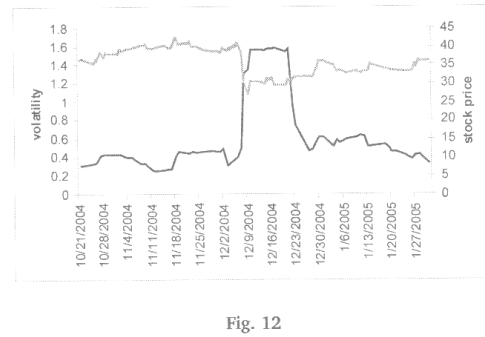
How To make High Profit In Candlestick Patterns : Chapter 6. Option Trading with Candlestick Signals : Tag: Candlestick Pattern Trading, Option Trading : option trading guidelines, option trading requirements, option trading good for beginners, best option stocks for beginners - Putting it all Together - Option Trading
